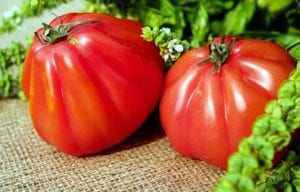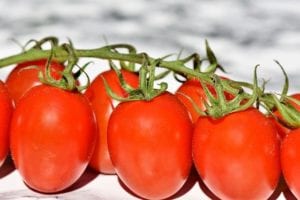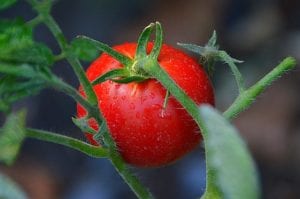Growing tomatoes in spring is one of our favorite gardening experiences to look forward to here in San Antonio. We thought we would offer up a quick list of what tomatoes like and dislike for you to keep in mind when growing this favorite fruit (yep, tomatoes are fruits).




4 Things Tomatoes Like
1. Tomatoes like to be planted deep.
While most plants need to be planted no deeper than the top of their rootball, tomatoes are an exception. 2/3 of your tomato plants should be buried under the soil. Really! Tomatoes are able to produce roots off of their stems so by planting them deep, you promote building an incredibly strong root system. Strong roots mean a strong tomato plant. You can pinch of bottom leaves or just bury them right into the ground.
2. Tomatoes like to be fed.
Tomatoes are heavy feeders. Start with a lot of rich, organic material mixed into the top 4-6 inches of the soil you will be planting your tomatoes in.
At time of planting, water your transplants in with a diluted (1/2 strength) water soluble nitrogen fertilizer like Grow Big from FoxFarm.
Offer your tomatoes 1-2 tablespoons of high nitrogen or all nitrogen fertilizer every 3-4 weeks. Once they produce blooms and begin to set fruit you can switch to a fertilizer like Big Bloom from FoxFarm that also contains phosphorous to promote flower and fruiting.
Granular fertilizers like Tomato & Vegetable Food from FoxFarm and Espoma Tomato-Tone are also good choices.
3. Tomatoes like consistent watering.
Start off by watering your transplants before planting and by filling up your planting hole with water before setting your tomato into it. From then on, water tomato plants slowly and deeply at the roots. Develop a regular watering schedule and stick to it. Inconsistent watering leads to blossom end rot, cracks in tomatoes, and plant wilt which results in low yields and low quality fruit.
4. Tomatoes like support.
We all like support, don’t we? Indeterminate tomatoes are vining plants that most of us don’t have room to let sprawl across our garden space. Even determinate tomato varieties need a cage or staking to make sure their limbs don’t get broken from wind or other elements.
Skip the little cages at the nursery and opt for the larger sizes. You may have to add extra support to even the largest sized cages if you are planting indeterminate varieites.




4 Things Tomatoes Dislike
1. Tomatoes dislike extreme heat and cold.
Tomatoes need that “just right” temperature in order to set fruit. In spring, this means planting when the danger of frost has passed. We use March 15th as a tentative date to get your tomatoes in the garden (depending on how the weather has been).
Tomatoes take around 90-100 days to harvest (depending on variety). So, if you wait too long to plant, the hot summer days will roll in before your tomatoes have had a chance to develop and ripen.
Heat will shut down tomato production just like cold will freeze and damage plants. Fun, right?
2. Tomatoes dislike crowding and their old homes.
Tomatoes need space to grow and stretch out. Ample space between plants allows for proper air circulation. Bad air circulation can cause stunted growth or it can promote fungal issues which can be a death sentence. Offer at least 24-36 inches of space between tomato plants.
Rotating where you plant tomatoes is advisable. It’s a rule of thumb becasue tomatoes are such heavy feeders that they tend to deplete your soil of nutrients. If you planted tomatoes last year, don’t plant your new tomatoes in the same spot for the next 2 years. This reduces the chance of pests and disease. (By the way, same for eggplant, peppers, and potatoes.) Try it and see the difference. An easy way to do this is to plant in containers for the years in between.
3. Tomatoes dislike wet feet.
Soil that doesn’t drain well is the kiss of death for a tomato plant. Soggy soil results in root rot, and that means buh-bye tomato plant. Amending your garden soil with soil conditioner and/or peat moss can help with drainage. Planting in raised beds is also a great solution for areas that don’t drain perfectly.
4. Tomatoes dislike shade.
Areas with too much shade produce tomato plants with leggy vegetative growth and… no tomatoes! Plant in an area that receives a minimum of 6 full hours of sun, more is better! Sunshine promotes fruit production and healthy, disease-free plants.
Ready to plant your tomatoes? Us too! We expect spring varieties to be at Rainbow Gardens mid to late February. Can’t wait!
~The Happy Gardener, Lisa Mulroy


Trackbacks/Pingbacks